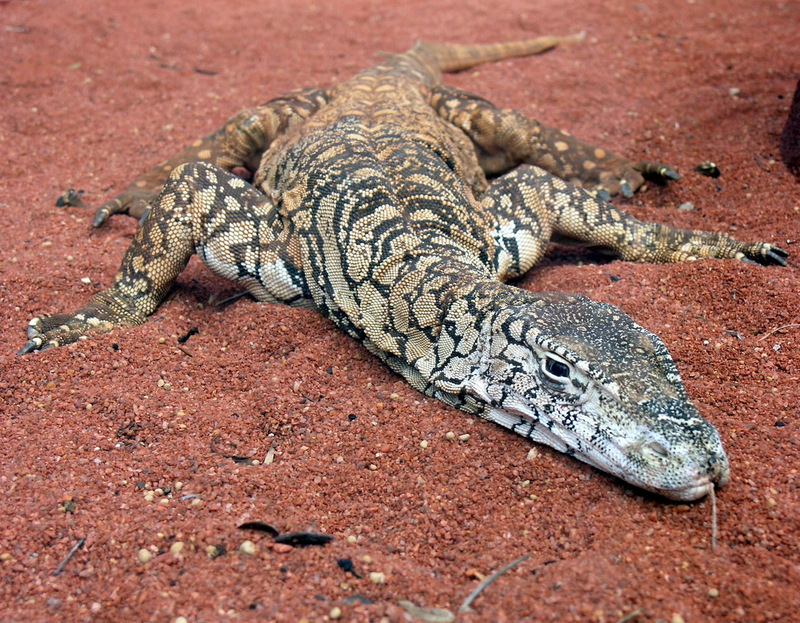| New Photos | Animal News | Animal Sounds | Animal Movies | Upload Photo | Copyright | Korean |
|---|
| Funny Animal Photos | Monsters in Animalia | Wiki Articles Fun Facts about Animals | Links | Home | Mobile A.P.A. |
|---|
| Image Info | Original File Name: Perentie_Lizard_Perth_Zoo_SMC_Spet_2005-Perentie (Varanus giganteus).jpg Resolution: 1209x941 File Size: 619294 Bytes Date: 2005:09:04 13:34:20 Camera: C8080WZ (OLYMPUS CORPORATION) F number: f/2.6 Exposure: 10/4000 sec Focal Length: 140/10 Upload Time: 2007:09:20 19:51:22 | |
| Author | Name (E-mail): Unknown | |
| Subject | Perentie (Varanus giganteus) - Wiki | |
 |
| Email : E-Card | Poster | Web Master Delete Edit Info Admin |
| Description | Perentie (Varanus giganteus) - Wiki
Perentie
The Perentie (Varanus giganteus) is the largest monitor lizard or goanna native to Australia, and third largest lizard on earth, after the Komodo Dragon and the water monitor. Found west of the Great Dividing Range in the arid areas of Australia, they are not a common sight on account of their shyness and remoteness of much of their range from human habitation. They were a favoured food item among desert Aboriginal tribes, and the fat was used for medicinal and ceremonial purposes. Description The lizard can grow up to 2.5 metres (8 ft) in length although the average length is around 1.75-2 metres (5.5-6.5 ft) and weigh up to 15 kg (33 lb). Their rival for third largest lizard is the crocodile monitor. Crocodile Monitors are longer, and often exceed 8 feet in length, but perenties are heavier and bulkier than the crocodile monitor. However, Perenties are relatively lean lizards, less bulky than either the Komodo dragon or the water monitor. Venom In late 2005, University of Melbourne researchers discovered that perenties, along with goannas and other monitors, are venomous. Previously, it had been thought that bites inflicted by these lizards were simply prone to infection because of bacteria in the lizards' mouths. According to some Australian wives' tales, the perentie is immune to the bite of venomous snakes. This folklore has not been experimentally tested in light of the discovery that the perentie is itself venomous. Distribution and habitat Arid Rocky with hard packed soil and some other loose rock matter Behaviour Perenties are not a common sight in Australia: they are hard to find, and usually evade any human "looker" before the "looker" has a chance to see them. They can stand on their back legs and tail to gain a better view of the surrounding terrain. This behaviour, known as "tripoding", is quite common to all monitors large and small. Perenties are fast sprinters, running using either all fours legs or just their hind legs. Diet Perenties generally forage for their food, but are also known to wait for small animals to come to them. Prey include: Insects Reptiles, including their own kin Birds Small mammals Carrion http://en.wikipedia.org/wiki/Perentie
| |||
| Copyright Info | AnimmalPicturesArchive.com does not have the copyright for this image. This photograph or artwork is copyright by the photographer or the original artist. If you are to use this photograph, please contact the copyright owner or the poster. |
|
|
|
| |||||||
| CopyLeft © since 1995, Animal Pictures Archive. All rights may be reserved. | ||||||||
Stats